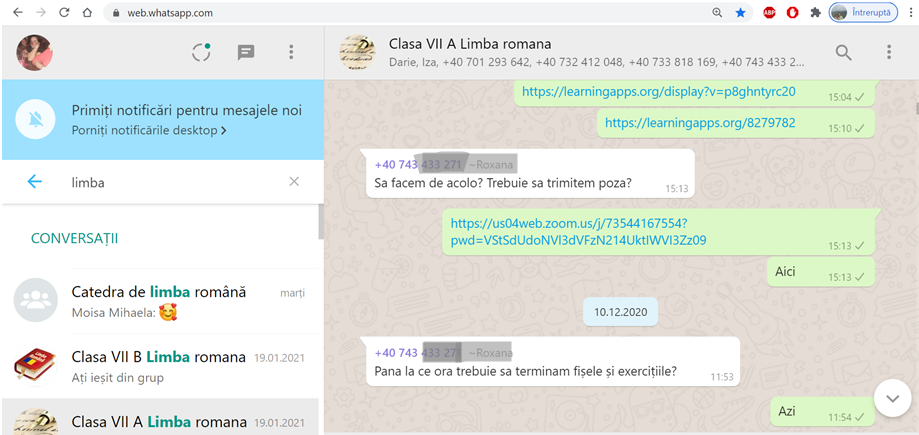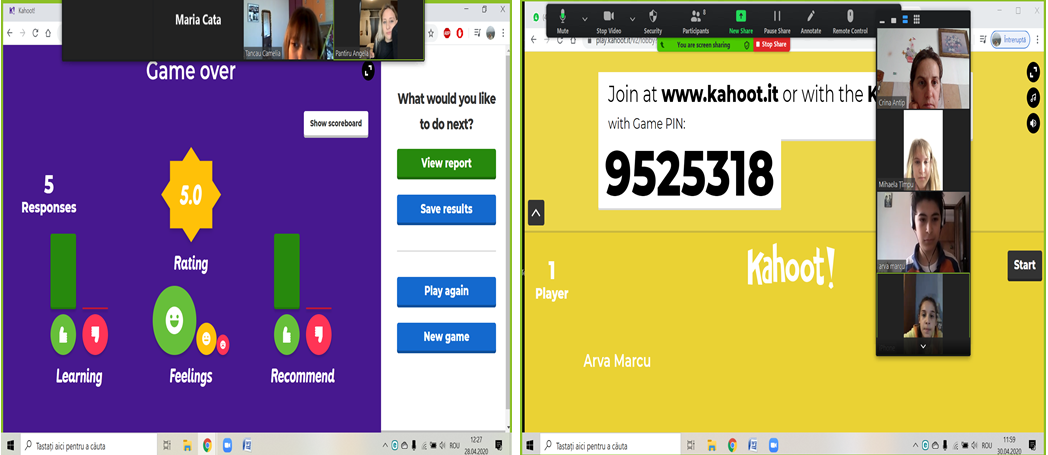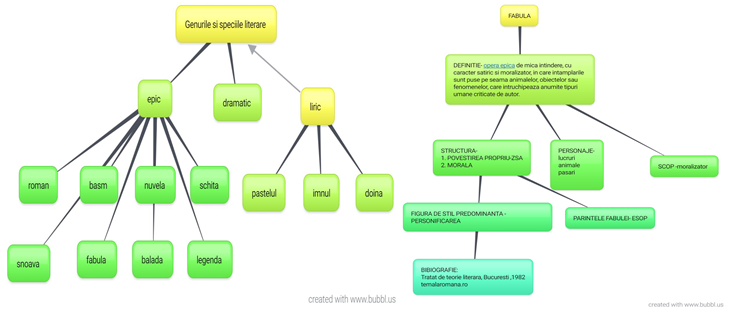Abstract: In this modern and rough times, teachers and students have to face a common enemy- COVID-19. Everything is changing. Only an interface keep us connected with our students. As teachers, we must find new methods to keep students connected with us. So, modern platforms, applications and methods will be the essence of this new way of teaching, called online teaching. The virtual environment, as a form of manifestation of modern technology, is gaining ground in the Romanian school, facilitating access to information and communication. Our children are familiar with the way of working and the facilities offered by virtual environments due to the automation, robotization, large-scale cybernetization of economic processes. So that, as a consequence, teachers have to know how to deal with modern applications and platforms so that , the interface between they and their students to be attractive and, nevertheless, useful.
Keywords: online teaching, platforms, aplications, modern methods
Initial Situation
Nowadays, informations and the Internet is one of the most precious resources of mankind, a natural, non-consumable resource, an element of infrastructure.
In the modern and this difficult society, in this rough and challenging times, both, teachers and students have to adapt and to face the fact that everything is changing, even education. Because this virus that separated us from our students, only an interface keep us connected. The teacher must find new ways and methods to keep students interested and make them to understand what is he teaching.
So, modern platforms, applications and methods will be the essence of this new way of teaching online.
Educators have long debated the issue of acquiring information, different from acquiring it practical and conceptual knowledge. Adherents of the thesis that information is the most important believe that, once properly learned, it optimally prepares students for social life. Those who consider practical experience and concepts as essential, argue their position by the fact that the information itself is not enough. Rather, they say, knowledge is valuable only when it is useful and can only be useful if it is understood in conceptual terms, being applied creatively and critically. No one disputes that the information is important.
To cope with everyday demands we need to know a lot. However, as societies change more and more rapidly, the idea that there is a volume of knowledge that will prepare students for the future enjoys less and less support. The difficulty in describing such a „collection of wisdom” becomes visible when we realize that 100% of what we know today is only 10-15% of what will be known in 15 years. Moreover, this extensive knowledge base will become increasingly accessible to the general public. Through electronic means of communication, schools become centers with access to the latest information from around the globe.
In addition, traditional methods are no longer attractive for children who participate in various virtual networks such as Facebook, Hi5, Myspace, Twitter, Youtube, Yahoo, to activities unrelated to school tasks (socializing, entertainment etc.), but however, it is an important support tool for the realization of school homework and projects through what it offers: information, documentation, communication, development.
Thus, learning goes beyond the classroom and incorporates complex technologies, and virtual environments allow teachers to expand the boundaries of creativity in the teaching-learning-assessment process to stimulate students’ imagination and facilitate the transfer of learning acquisitions in everyday life day. In order to successfully fit into a changing world, students will need the ability to select information and understand the correlation between them, to decide what is/ is not important, to place ideas in various contexts and new knowledge, to discover the essence of the things encountered for the first time, to reject irrelevant/ false data, to give critical, creative and productive meaning to that part of the informational universe they will face. In order to handle information well, pupils/ students must know how to apply thinking operations, to learn critically, to sort data effectively, to give them meanings that, in turn, will be materialized in certain behaviors. Impact does not occur automatically (Collins and Mangieri, 1992).
Students will be accustomed to identifying, processing, mastering and using information and ideas, as well as developing the ability to analyze and reflect critically. For this to happen in the classroom, teachers must provide them with a systematic and transparent framework for thinking and learning: systematically – in order to understand and apply the process consistently; transparent – for students to become aware of, follow and monitor their own thought processes during independent study.
The teacher is no longer only a provider of knowledge, but also a provider of teaching resources, expert in asking questions (not only in giving the right answers), becomes a mentor, mediator, member of the study group, gives more importance to learning styles of students, uses didactic strategies that promote student-centeredness and the formation of higher-level thinking skills. Students are no longer passive recipients, but become creators of their own knowledge and become responsible for their own learning process.
But in these dark days, when humanity is facing a deadly enemy, e-learning platforms have several roles, some of which are:
- maintaining the connection with the teacher, with the school environment
- creating a link between what you learned at school and what you repeat at home
- maintaining an informational and cognitive continuity
- maintaining a normal climate, the child feeling somewhat connected to positive thoughts
- reducing the time spent on Facebook or other applications inappropriate for his age
- creating a bond of trust in the classroom teacher, the student reacting to the virtual lesson much more relaxed than in a traditional lesson.
Teaching Romanian language and literature, an object that allows a wide range of creativity, I used a number of platforms and virtual applications, such as: Facebook Messenger (video), WhatsApp, Zoom, Kahoot, Socrative, Pinterest, Canvas, Bubbl-us, Mind-Map etc. All of these platforms enhance students’ creativity, reduce emotion and address all types of Gardner’s intelligence.
Messenger – is the first application I used, managing to connect the virtual class to the online lesson, but the video call does not allow the simultaneous use of up to eight people.
WhatsApp is the second application accessed, but only three people can enter the video call at a time, which bothered me, because the information could not reach the whole class except in writing, which is a little harder to receive. But we use this way to keep in contact and to post the homeworks or worksheets or to send the meeting link or other apps used in our activity.

Zoom cloud meetings is the application that allows users to hold conferences „on the go” from your smartphone or tablet, wherever they are. Thus, we were able to make video conferences of up to 100 people, also having at our disposal the messaging function through which we could share various files and pictures. 1: 1 video conferences are free, regardless of their duration, while group conferences are free for only 40 minutes, and this was somewhat of a minus, because I could not explain in detail the tests performed, but the students have understood what we achieved together and what a big step we took to stay connected, both visually and psychologically, in our small virtual classroom. Emotions disappeared, and I felt that the students reacted more confidently and more creatively.

Google classroom – With Google Classroom, teachers can make their time more efficient, organize their classes, and communicate more easily with students. Classroom is a new tool in the Google Apps for Education suite with which teachers can quickly create and organize homework, provide effective feedback, and easily communicate with students. With the Classroom app, students can organize their homework in Google Drive, complete it, teach it, and communicate directly with teachers and colleagues. The Classroom app works with Google Docs, Drive and Gmail. Thus, teachers can create and collect homework without it being on paper. They can also see who has finished their homework, as well as provide direct and real-time feedback to each student. Teachers can post announcements and questions, as well as communicate in real time with students: communication in and out becomes more effective.
Kahoot is the application that is one of the applications that I use successfully in working with students, in most subjects, at any time of the activity: in recapitulating knowledge, in fixing knowledge, in the teaching stage, as formative assessment or even as assessment summative. It is an easy to use application, much loved by children. It is accessed by them from the mobile device or by entering the kahoot.it website, in which case the computer or laptop can also be used.
Advantages of using the KAHOOT application:
• for teachers:
– Improving the quality of the teaching-learning-assessment act;
– Raising standards in digital skills;
– Development of creativity in design.
• for students:
– Improving digital skills;
– Development of self-control;
– Mutual understanding;
– Developing self-confidence.
It is very important that students perceive the use of this application as a game, they do not feel evaluated, relaxed and eager to interact even more with digital technology in school, education and, why not, in self-education.

Socrative is an assessment tool for obtaining instant data from students. You can create different tests, multiple choice, true/ false, or short answer tests, the results being displayed in real time, then downloaded and reports can be made according to class, question or student. It is an easy-to-use tool to create formative assessments and get real-time results. With Socrative, teachers can train the class with educational exercises: questionnaires, quick surveys, exit tickets (to get students feedback on this topic and how effective you were in explaining it).

Pinterest is a combination of a bookmarking site and a ”virtual panel” that allows users to insert (”pin”) images and videos on various categories (”boards”). Visitors can copy (“repin”), comment or appreciate (“like”) the viewed materials.
Canvas is an application for creating, presenting and sharing technical illustrations and graphics, which we used to create certain tasks, not only in class, but also for E-Twinning projects.
Bubbl-us, Mind-Map allow the graphical organization of information and bring only an extra creativity in the teacher’s time.

Scratch is a programming language used in thousands of primary, middle and high school classrooms around the world. We were able to introduce creative informatics as a CDS type program, using the activities as a source of inspiration and basis for open explorations of students, helping them to tell the story of some characters graphically, and the students liked every moment!
Toontastic is another application which can be an alternative to comics method or storytelling in pictures- everything in the lesson can be retell in this way. Using tablets, students can tell a story through programming. This idea liked very much.They had to create a story called ”School experiment” and they had a lot of fun, learning was done through playing

These methods made the lessons interesting! In this way we can stimulate their creativity, so we can determine them to learn, to think intra-plural or transdisciplinary. In this way we can stimulate thinking and a healthy exchange of ideas leading to active learning.
We can’t completely miss the traditional methods, we can’t throw decades of ABAC or ALPHABET in the trash, we can’t wipe everything with chalk and sponge, but we can have the capacity, but we can also revolutionize the way we approach the lesson, to we bring it to the contemporaneity, to prepare students with an adequate critical thinking, to come with pleasure to the classes, to have ideas, to germinate projects and to carry them out individually or in a team to a good end, in a trans or multidisciplinary.
The teacher therefore needs: “relational competence, ability to promote cooperative and competitive relationships, a cooperative work style to ensure the unity of the class, to achieve a high degree of its cohesion, to stimulate centripetal tendencies instead to the centrifugal ones, in order to form the consciousness of the students they deal with” [Cerghit, 2008, p. 183].
Online active teaching and learning is a type of learning that is based on the deep-intellectual, psychomotor, affective and volitional individual involvement of the subject of learning in acquiring the new, respectively engaging his own intellectual and psychomotor efforts in the active and creative acquisition of knowledge, in building knowledge, in training and developing skills, abilities, competencies, behaviors, etc.
Active training is a superior type of training, which is based on activating training subjects, respectively on their involvement and active and full participation (intellectual/ cognitive, affective-motivational and psychomotor) in their own training process, by establishing intellectual, verbal interactions, social-emotional and affective with the teacher and interactions with the curricular contents.
Social, interpersonal communication, promoted in active learning is an active one, it involves interactions and intellectual, verbal, social-emotional and affective exchanges: teacher-student and student-teacher, mediated by curricular contents, profitable interactions for all participants in the educational process.
Conclusion
Using the virtual educational environments are beneficial for anyone who is interested in developing and enriching his professional performance, but at this time this way of teaching is a necessity.
References
1. Callo, T. (2008) Ghicov A., Elemente transdisciplinare în predare, Ştiinţa, Chişinău, 2007
2. Ciolan, L. Învăţarea integrată. Fundamente pentru un curriculum transdisciplinar, Polirom, Iaşi
3. Cerghit, I. (2008), Sisteme de instruire alternative şi complementare. Structuri, stiluri şi strategii, Ediţia a II-a, revăzută şi adăugită, Iaşi, Editura Polirom
4. Ciolan, L. (2003) Dincolo de discipline – ghid pentru învăţarea integrată/cross-curriculară, Ed. Humanitas Educational, Bucureşti,
5. Cucoş, C. (2002) Pedagogie (ed. a II-a), Ed. Polirom, Iaşi
6. Ionescu M. (2004), Radu I., Didactica modernă, Editura Dacia, Cluj- Napoca
7. Nicolescu B. (2008), Transdisciplinaritate – Manifest, Editura Polirom, Iaşi
8. Nicolescu B. (1999), Transdisciplinaritatea, Polirom, Bucureşti
9. Petrescu P., Pop V. (2007) ,Transdisciplinaritatea – o nouă abordare a situaţiilor de învăţare, E.D.P. Bucureşti
10. Richardson, J. (December 1996/ January 1997). Deschizând drum învățării prin colaborare,School Team Innovator
11. Blumenfeld, P. C., Marx, R. W. (1997). Motivation and cognition. În H. J. Walberg, G. D.Haertel (eds.), Psychology and educational practice, 79-106. Berkley, CA: McCutchan.
* * *
prof. Antip Crina-Ramona, doctorand – Universitatea de Stat din Tiraspol (Chișinău)
Școala Gimnazială „Nicolae Bălcescu”, localitatea Nicolae Bălcescu, județul Bacău, România
ORCID iD: 0000-0003-4931-3166
Trebuie să fii autentificat pentru a publica un comentariu.